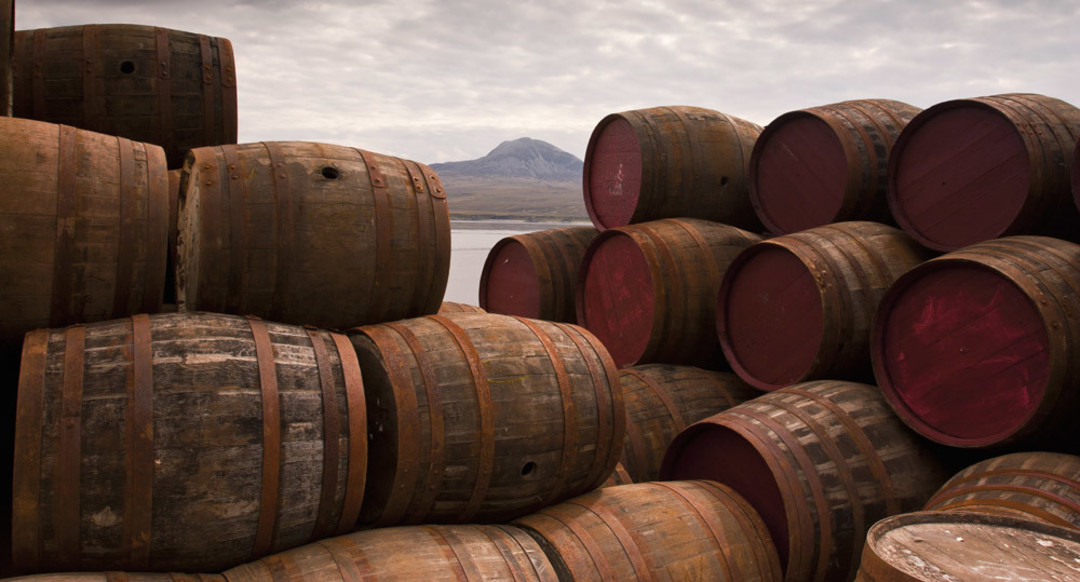Oregon’s Link to the World’s Most Famous Single Malt Scotch

Scotch barrels stacked on Islay, Scotland
Image: Shutterstock
August on Islay (pronounced “eye-lah”) can feel a lot like late winter in Portland. Constantly buffeted with storms, one of Scotland’s westernmost islands is a stark, windswept green beneath a thick blanket of gray. Still, thousands of whisky devotees flock here every year to worship at the source of one of the world’s great single malts, Bruichladdich (“brook-laddy”). Walking toward the distillery’s whitewashed Industrial Revolution–era buildings, I was one of those devotees, shivering under tweed cap and layers of Pendleton flannel. Summer, our guide explained as the wind kicked up, “was last week.”
Inside the 133-year-old distillery, the earthy, sweet smell of malted barley is inescapable, especially when you stand next to a “washback.” These massive vats, some as tall as a person, house the 8-percent-alcohol, beerlike liquid that will be distilled into neutral spirit, and ultimately aged into Scotch whisky. For the time being, it tastes and smells like microwaved Widmer Hefeweizen.
But for a pilgrim from that other rain-drenched, booze-happy land far away, the biggest surprise is that the washback links Islay to Oregon’s forests. Wooden washbacks are constructed in Scotland, as one would expect, but the wood comes from Oregon. That’s right: your favorite Scotch probably began life in a Doug fir barrel—a cross-Atlantic connection that’s been alive for a century.
“It is my understanding that Oregon pine was originally used as it was a tall, straight piece of wood that also had few knots in the length required,” says Andrew Brown, manager of another of Islay’s single malt distilleries, Bunnahabhain (“boon-a-hob-in”). “They are still used on an almost daily basis throughout the year.” An added benefit: fir does not impart noticeable flavor on the finished product.
Bruichladdich and Bunnahabhain are two of the more than 50 distilleries supplied by Joseph Brown Vats of Dufftown in northern Scotland, a specialty vat maker since 1921. Some years Joseph Brown imports as much as 400 cubic meters of Oregon pine (as some Scots refer to our stateside Doug fir) from Starfire Lumber of Cottage Grove to supply a wide range of distilleries, from blend giants Dewars and Johnny Walker to well-respected single malts like Talisker, the Balvenie, and Ardbeg. The small factory near the banks of the River Fiddich partners with global beverage giants like Chivas Brothers and Diageo to ship Oregon pine washbacks across Scotland, but also to Ireland, and as far as Sweden, Germany, and Japan.
“It is more expensive for us, but we select out the very best of the timber for vat building,” said Joseph Brown’s Ron Low, a 30-year veteran of the trade. “We require timbers to be straight and flat, minimal sap, and almost knot free.” The primary wooden competitor to Oregon fir is European larch, which Joseph Brown both sources locally and imports from Siberia. “Quality larch is getting harder to source,” adds Low. “The bulk of our material is from Starfire.”
Nearly 5,000 miles from home, surrounded by an international gaggle of single malt faithful, I was surprised to feel a deeper kinship with this rainy isle’s mysterious alchemy. Did we really need yet another reason to love our state tree?
